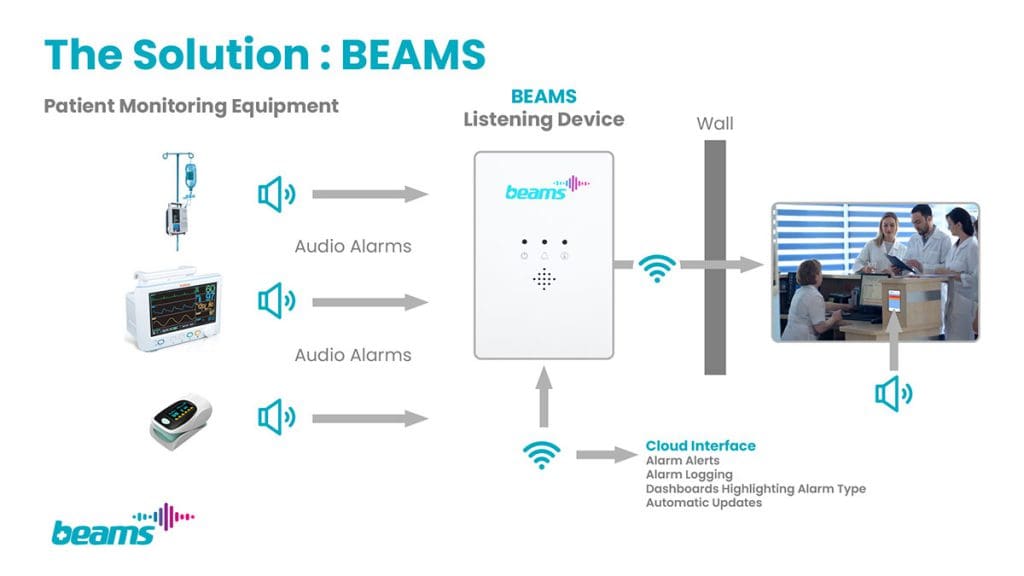
In the ever-busy hospital environment, medical device alarms play the role of watchman, alerting healthcare professionals to patient needs and potential complications. However, as the field of alarm monitoring evolves, the choices offered to hospitals become increasingly complex. In this blog, we’ll explore the unique attributes of BEAMS – the world’s only acoustic alarm monitoring system – in contrast with traditional central monitoring systems.
BEAMS Acoustic System: an acoustic detection system, BEAMS can function with medical devices from diverse manufacturers, affording hospitals unparalleled flexibility. This device-agnostic nature ensures that from mattress deflation to blood oxygen saturation no device is left out, a crucial aspect in comprehensive patient monitoring. Notably, Lee et al. highlight the significance of effective alarm management in reinforcing patient safety1.
Central Monitoring Systems: these systems confine hospitals to devices from a singular manufacturer, or require hard-wiring into hospital systems, and/or integration with hospital IT. . Given that no manufacturer can cater to all monitoring needs, there’s potential for oversight.
BEAMS Acoustic System: BEAMS utilises its own WiFi mesh, eliminating the need for intensive infrastructure overhaul. More importantly, it functions independently, circumventing any potential issues related to Electronic Patient Records (EPRs) or data breaches.
Central Monitoring: central systems can demand significant infrastructure updates, particularly if they’re wired. Furthermore, relying on a single manufacturer might lead to potential integration challenges when systems are updated or expanded.
BEAMS Acoustic System: its inherent agility means BEAMS can easily incorporate new devices as the medical tech landscape evolves. All we need is a sound file and the system can be updated to recognise new technology overnight. Such adaptability ensures hospitals aren’t left behind as new advancements roll out.
Central Monitoring: systems tied to one manufacturer might run the risk of becoming outdated or necessitating expensive overhauls as tech progresses. Not all devices are attached to power cables, so mobile devices cannot be monitored through hardwired systems.
As the only acoustic, device-agnostic alarm monitoring system globally, BEAMS presents an exciting blend of adaptability, user-friendliness, and foresight. Hospitals seeking a robust, flexible, and efficient alarm monitoring approach should consider the merits of this groundbreaking solution over more traditional options.
Contact us if you’d like to know more.